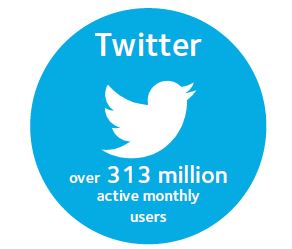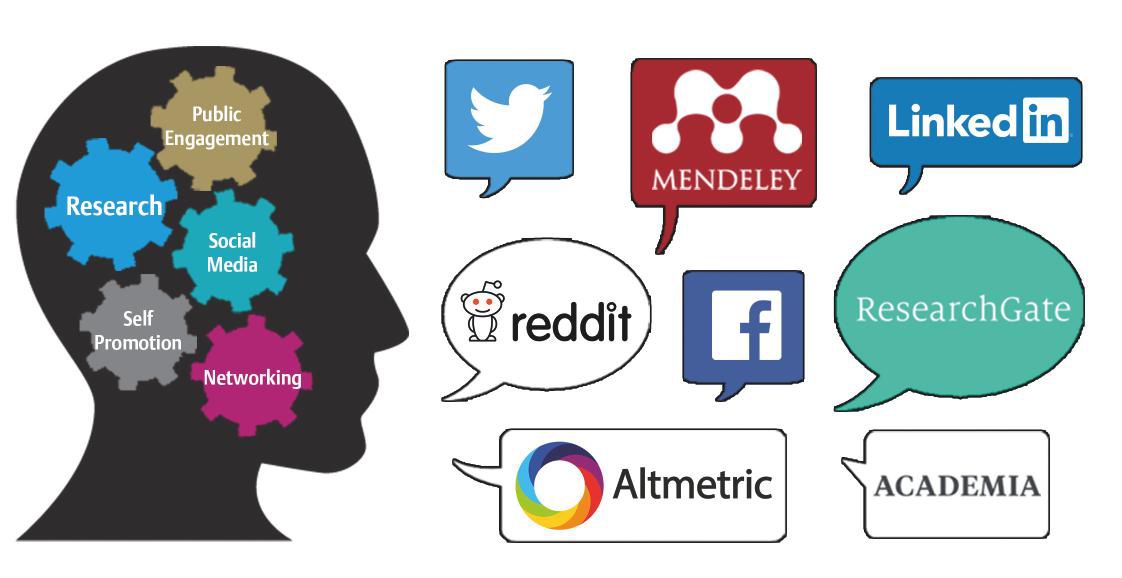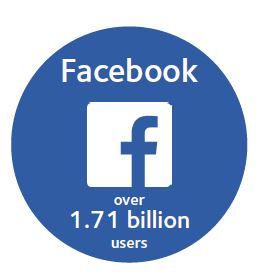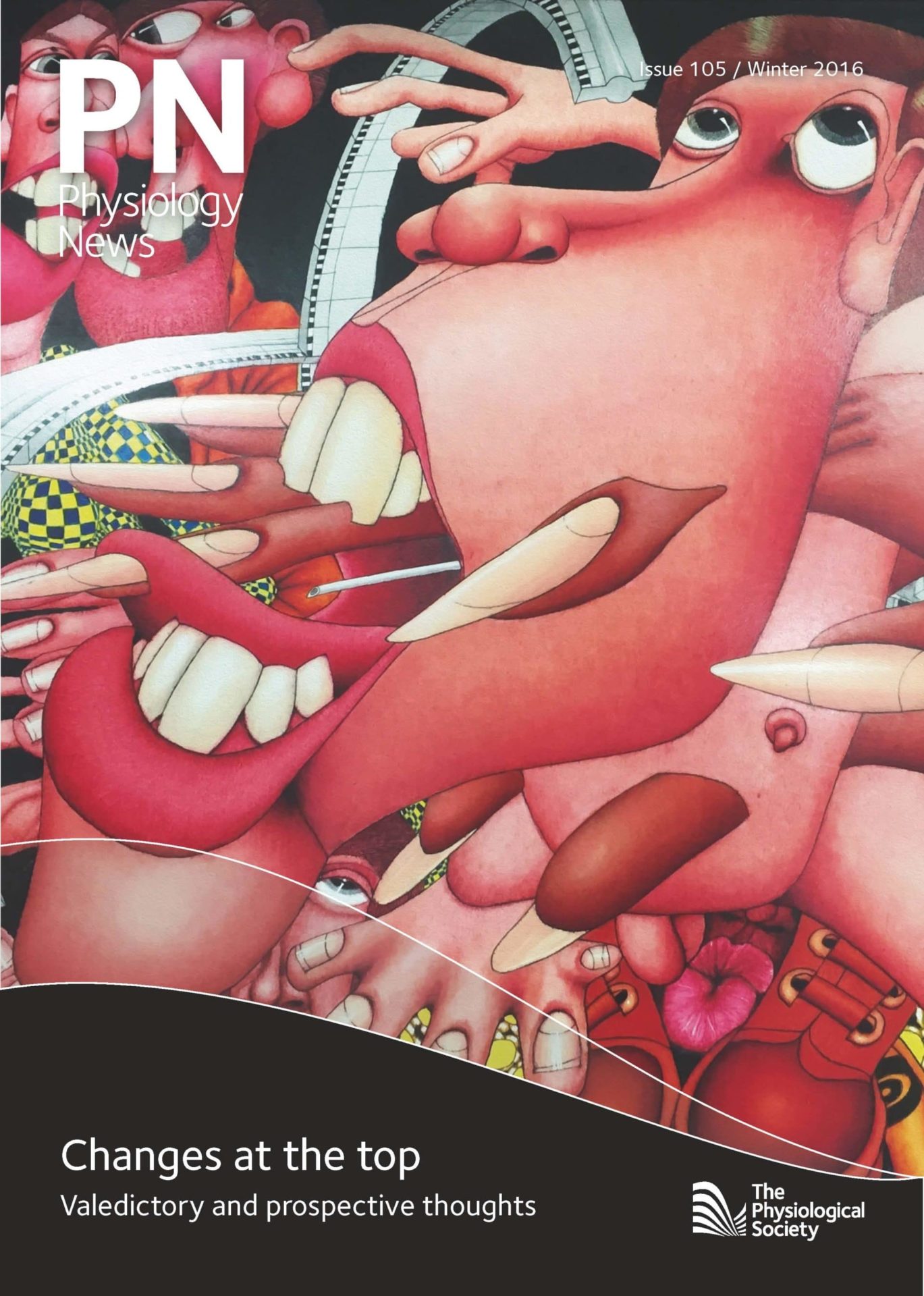
Physiology News Magazine
Scientists and Social Media – can you tweet your way to impact?
In the era of social media, there are many ways a scientist can promote their work and engage with others
Features
Scientists and Social Media – can you tweet your way to impact?
In the era of social media, there are many ways a scientist can promote their work and engage with others
Features
Priya Mistry
Editorial Administrator, The Journal of Physiology
Twitter: @Pri_Mis
https://doi.org/10.36866/pn.105.32
Twitter has over 313 million active monthly users and Facebook has over 1.71 billion. Research has shown that social media can increase the number of journal article downloads (Wang et al., 2016 & Allen et al., 2013). So why do some academics and research scientists avoid these platforms? Social media has become a global forum, allowing people to share ideas, make new connections and create new research paths at an international level. But can the reach of these platforms affect the impact of research? And if so, how can we measure it? As a scientist in your field, it’s in your best interest to share your work and other related topics in your field. So how can social media help you?

What is social media?
Social media consists of websites and apps which allow users to generate and share content while networking with other users. Social media platforms come in all shapes and sizes, but how do you know which ones are right for you and your target audience? The most popular platforms are Facebook and Twitter, however, there are many, many others covering different niche areas and demands. Online networking tools specifically for scientists include ResearchGate, Academia.edu and Mendeley, and these have millions of users. Reddit, a social news and discussion website, is so popular with scientists that Nature and PLOS have collaborated with them, allowing editors and authors from the journal to engage with verified accounts or ‘flairs’. The ‘subreddit’ r/Science has over 13 million subscribers, so there is definitely a demand for a more informal platform of science discussion.
Why should I engage?
You’re an academic, a professor, a PhD student, a science professional and you’ve been getting on fine without social media. So why should you engage online? There are so many ways that online networking can benefit you and others.
To network with peers
Social media can be used for peer to peer interaction and can help you collaborate with others at an international level. The community feel of online networking keeps you in touch with the latest scientific research and allows you to discuss and debate new ideas and developments. ‘Hashtags’ are a type of label used on social networks to categorize posts. Tweeting and following these during conferences helps you to follow the best parts of it, and others can be in virtual attendance – almost creating an online convention centre.

For Public Engagement
Scientific research is academically communicated through publishing, poster presenting and lectures. But this research can be disseminated to the general public through all forms of media, including social media. We should communicate science to the public as it allows them to make informed decisions – issues around global warming and vaccines are examples of where this communication is important. 79% of the British public said they trust scientists to tell the truth, in contrast to 25% saying they trust journalists (Ipsos MORI, 2016). This just goes to show that scientists have a responsibility themselves to not only communicate their own research, but also to represent the scientific community, to engage and to help the public understand and appreciate science. Knowledge about science can affect the public’s attitude towards it and how they would vote in political ballots and elections, which can indirectly affect the support and funding for science research. Social media is an effective way to reach out to the general public and have a direct impact on them.
According to the Physiological Society’s ‘Health of Physiology’ report, the visibility of ‘physiology’ as a whole is declining, as the science is becoming fragmented into other sub-disciplines. Now is as a good time as ever for physiologists to promote their work and the importance of the discipline, so physiology can be better represented with the public and scientific community. Engagement could also inspire the younger generation to follow the footsteps of a scientist and encourage them to study and pursue physiology.
For Self-Promotion
You have put your blood, sweat and tears into creating a research paper which has just been accepted. And now you want your paper to be easily found, read and ultimately, to be cited. Journals publish hundreds of papers every day so you can’t rely on publishers to publicise your research. The best person to promote your article is you; you know the most about your research and the significance of it. ResearchGate and Academia.edu are excellent ways to share your research with other academics and sharing posts on Twitter and Facebook will further help with discoverability.
Academic networking profiles and LinkedIn are useful tools to use as a ‘digital CV’, however you must also think about your digital footprint. If you Googled yourself, what would you find? According to a recent survey by recruitment company Careerbuilder (Nikravan & Ladan, 2016), 60% of employers use social networking sites to research candidates in addition to looking at a CV or cover letter and 41% say they are less likely to interview job candidates if they are unable to find information about them online. If social media is used correctly, you can use it to create an effective digital profile, showcasing your work and knowledge and helping you with recruitment and self-promotion. The best part of this is that it’s free!
The Editor’s in Chief of both The Journal of Physiology and Experimental Physiology are keen Twitter users. Kim Barrett signed up for Twitter to engage with both authors and the readership. She says ‘I am rapidly finding it useful in areas well beyond my Journal affiliation. More and more scientists are using Twitter to alert colleagues not only to their own work, but also that of other labs. By following colleagues whose work I admire, I am getting insights into exciting new areas of physiology.’ Mike Tipton started using social media because of its immediacy. He mentions ‘it is a quick and effective way to obtain and share information. The maths mean lots of people can hear what you have to say very quickly.’
How do I start?
Now that you’ve read all the reasons for engaging online, how do you start? As new publishing services emerge, there are more ways for authors to promote their own work. Specific tools are available for authors to help them improve the reach of their research articles. Kudos is a service which authors can use to explain their work in a lay summary and then share using the ‘Kudos toolkit’, which involves sharing by email, social media and through blogs. Other services available to communicate your research are blogging websites such as JSTOR daily and a more recent service of ‘Cartoon Abstracts’ offered by Taylor & Francis.
You are still the best person to share and discuss your work and social media platforms are a great way to get you and others talking. But the thought of all the profiles to create and platforms available can be overwhelming. Here are a few steps to help you get started:
Start off small
Michelle Lockett, Director of Social Media at John Wiley & Sons, suggests starting off small by creating a profile, looking at hashtags and browsing what’s already available. Twitter is a good platform to start off with as you only need to think of 140 characters for a tweet.
Follow your interests
Once set up, you can ‘follow’ or ‘add’ other accounts depending on the platform you use. You can Follow your peers, follow your role models, follow companies and follow us (shameless plug)!
Engage
Michelle recommends to only engage on social media when you feel comfortable. Some may find this easier than others, but don’t be discouraged if you find that your profile is looking a little bare or is slow to get attention. Practice makes perfect!
Post optimally and consistently
The lifespan of a tweet is about 18-24 minutes – this means that your tweet is ‘pushed down’ the feed and is less likely to be viewed after this time. So you should try to post at optimum times (in the mornings, lunch time and after work) and post consistently if you would like a bigger following. You can post about your own research, other papers in your field, your interests or anything that you want!
Download the apps
Having the social media apps on your phone means that you can have access to your profile at your fingertips and will make it easier for you to post wherever you are.
Be yourself
Don’t be afraid to show your personality; giving your account a personal touch and sharing your interests distinguishes you from countless other social media accounts.
Have fun!
Once you get the hang of it, social media can be quite enjoyable and almost addictive. You’ll find yourself constantly checking your profiles in no time!
How can I measure success?
As a scientist, you are hard-wired to want to track, analyse and evaluate anything you do. Luckily, tracking posts online can be easier than you think. Links created via the author service Kudos, can be easily tracked and analysed so you can see who’s been clicking and sharing. Many publishers, including Wiley, have integrated Altmetrics onto their research papers. This service allows authors to track where the research paper has been mentioned. It gives articles a score based on popularity and the rank of the media on which it has been shared. This tool can also be used to check how well your paper is doing on social media and you can find the most trending research by looking at articles with high Altmetrics scores. Twitter and Facebook analytics are another easy way to track the number of views and clicks your posts have received.
A study from the Journal of Medical Internet Research (Eysenbach, 2011) showed that articles which were highly tweeted about were 11 times more likely to be highly cited than those with no tweets. In contrast, a study in Scientometrics (de Winter, 2015) has shown that the number of times an article is tweeted is weakly associated with the number of citations. So although tweeting may not be the cause of citations, Twitter can help to predict which articles will be successful and can give you an idea on how well your article will do. A paper from PLOS ONE (Allen et al., 2013) has also shown that social media posts on a research article increase the number of people who view or download the paper, proving that social media can help to increase reach.
Finally, if you’re looking for a more numerical value to measure the success of your Twitter profile, you can use the Kardashian Index; a metric proposed by genome scientist Neil Hall to measure the discrepancy between a scientist’s social media profile and publication record (Hall, 2014). This index uses the relationship between the number of Twitter followers and the number of citations a scientist has to indicate over-blown or undervalued scientific fame – essentially a way to find out if you’ve become a ‘Science Kardashian’!
Conclusion
Social media is a great add-on to your public profile, and although not essential to your career, it’s a great tool which can be used to your advantage. In this day and age of the internet, it’s difficult to keep your research distinctive, especially with around 2.5 million articles being published a year (STM, 2015). So why not give your paper, and yourself, a boost by engaging online?
Although Social Media is great for sharing, it’s also important to note that it requires some responsibility. Opinions and discussion are welcome on these platforms, but posting provocative photos, discriminatory comments or negative remarks about a co-worker can affect your career, so be mindful about what you post and share.
It’s difficult to know the relationship between reach and impact. Reach is something which is relatively easy to measure but impact is less straightforward. However, this doesn’t mean that our efforts on reach are wasted. Sharing on social media can have many other hidden impacts, such
as influencing the public, scientists, and readers. Citations are not always the end goal and you can extend your impact beyond the papers you’ve published. Knowledge is only useful if shared!

References
Allen HG, Stanton TR, Di Pietro F, Moseley GL (2013) Social Media Release Increases Dissemination of Original Articles in the Clinical Pain Sciences. PLoS ONE 8(7): e68914
de Winter, JCF (2015). The relationship between tweets, citations, and article views for PLOS ONE articles. Scientometrics 102, 1773
Eysenbach G (2011). Can Tweets Predict Citations? Metrics of Social Impact Based on Twitter and Correlation with Traditional Metrics of Scientific Impact. J Med Internet Res 13(4):e123
Hall, N (2014). The Kardashian index: a measure of discrepant social media profile for scientists (PDF). Genome Biology 15 (7), 424
Nikravan & Ladan (2016). ‘Number of Employers Using Social Media to Screen Candidates Has Increased 500 Percent over the Last Decade’. CareerBuilder, Accessed 07 Oct 2016. www.careerbuilder.com/share/aboutus/pressreleasesdetail.aspxsd=4%2F28%2F2016&siteid=cbpr&sc_cmp1=cb_pr945_&id=pr945&ed=12%2F31%2F2016
‘Politicians Are Still Trusted Less than Estate Agents, Journalists and Bankers’ (2016). Ipsos MORI. Accessed 07 Oct. 2016. www.ipsosmori.com/researchpublications/researcharchive/3685/Politicians-are-still-trusted-less-than-estate-agents-journalists-and-bankers.aspx#top
STM: The Global Voice of Scholarly Publishing (2015). The STM Report: An overview of scientific and scholarly journal publishing. Fourth Edition.
www.stm-assoc.org/2015_02_20_STM_Report_2015.pdf
Wang X, Fang Z & Guo X (2016). Tracking the digital footprints to scholarly articles from social media. Scientometrics. doi:10.1007/s11192-016-2086-z
